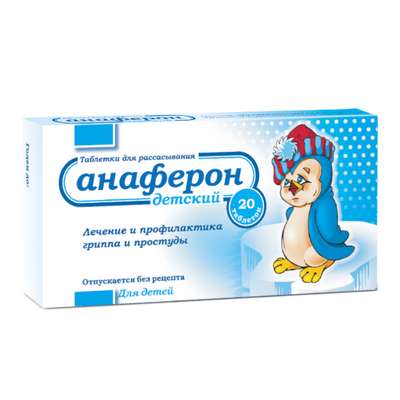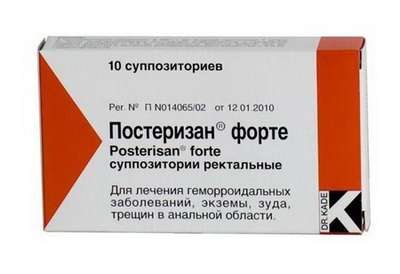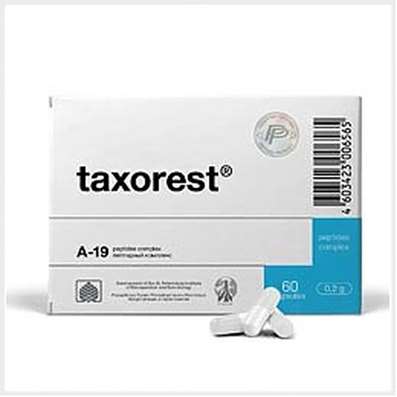Instruction for use: Glutoxim
I want this, give me price
Dosage form: Sample standard powder; Injection for injection; Substance-powder
Active substance: Glutamyl-Cysteinyl-Glycinum dinatrium
ATX
L03AX Other immunostimulants
Pharmacological group
Other immunomodulators
The nosological classification (ICD-10)
A15-A19 Tuberculosis: Lightning pulmonary tuberculosis; Chronic tuberculosis of the lungs; Disseminated tuberculosis; Disseminated tuberculosis of the lungs; Pulmonary tuberculosis; Drug-resistant tuberculosis; Drug-resistant form of tuberculosis; Drug-resistant tuberculosis; Tuberculosis; Pulmonary tuberculosis; Pulmonary tuberculosis; Fulminant tuberculosis of the lungs; Tuberculosis of the lung chronic multidrug-resistant; Caseous pneumonia
B18 Chronic viral hepatitis
D84.9 Unspecified Immunodeficiency: Pneumonia in immunodeficient states; Autoimmune disease; Autoimmune diseases; Severe immunodeficiency; immune deficiency; Immunodeficiency; immunodeficiency diseases; Immunodeficiency states due to surgery; Immunotherapy for cancer; Immunomodulation; Infections in patients with weakened immune systems; Correction of immune deficiency; Correction of immunodeficiencies; Correction of a weakened immune system; Correction of a weakened immunity in immunodeficient states; Violation of immunity; Violation of the immune status; Immune System Disorders; Primary immunodeficiency; Maintaining immunity; Lowering the body's defenses; Lowering the immunity; Lowering the immunity of colds and infectious diseases; The decrease of the immune status; Lowered resistance to infections; Lowered resistance to infections and colds; Lowered resistance; Immunosuppression; Predisposition to colds; acquired immune deficiencies; Radiation immunodeficiency; The development of immunodeficiency; Immune dysfunction syndrome; immunodeficiency syndrome; primary immunodeficiency syndrome; Reducing the body's defenses; Immunosuppression; Reduced immune defense; Reducing local immunity; Reducing the total body resistance; The decrease in cell-mediated immunity; Reduced resistance to infections in children; Reducing the body's resistance; Reduced resistance; reduced immunity; Status immunodeficiency; Stimulation of the processes of nonspecific immunity; Heavy selective secondary immunodeficiency; immunity Oppression; Primary immunodeficiency
L40 Psoriasis: Chronic plaque psoriasis with diffuse; generalized psoriasis; Psoriasis of the scalp; hairy parts of the skin; A generalized form of psoriasis; Psoriazoformny dermatitis; Psoriasis complicated with erythroderma; disabling psoriasis; Isolated psoriatic plaque; Eksfolliativny psoriasis; psoriatic erythroderma; Psoriasis with eczematization; Hyperkeratosis in psoriasis; Inverse psoriasis; Psoriasis ekzemopodobnye; dermatoses psoriazoformny; Psoriasis genitals; Psoriasis lesions with hairy areas of the skin; erythrodermic psoriasis; Chronic psoriasis of the scalp; Chronic psoriasis; ordinary psoriasis; refractory psoriasis; Koebner phenomenon; psoriasis
Z100 * CLASS XXII Surgical practice: Abdominal surgery; adenomectomy; Amputation; Coronary angioplasty; Angioplasty of the carotid arteries; Antiseptic skin treatment for wounds; Antiseptic Hand; Appendectomy; atherectomy; Balloon coronary angioplasty; Vaginal hysterectomy; The coronary bypass; Interventions in the vagina and cervix; Interventions on the bladder; Intervention in the mouth; Restoration and reconstructive surgery; Hand hygiene of medical personnel; Gynecologic surgery; Gynecological intervention; Gynecological surgery; Hypovolemic shock during operations; Disinfection of purulent wounds; Disinfection of wounds edges; Diagnostic intervention; Diagnostic procedures; Cervical Diathermocoagulation; Long-surgery; Replacing the fistula catheters; Infection in orthopedic surgery; Artificial heart valve; cystectomy; Short-term outpatient surgery; Short-term operation; Short surgical procedures; Krikotireotomiya; Blood loss during surgery; Bleeding during surgery and in the postoperative period; Kuldotsentez; laser photocoagulation; laser coagulation; retinal laser coagulation; Laparoscopy; Laparoscopy in Gynecology; CSF fistula; Small gynecological operations; Small surgical procedures; Mastectomy and subsequent plastic; mediastinotomy; Microsurgical operations on the ear; Mukogingivalnye operation; suturing; Minor surgery; neurosurgical operation; Immobilization of the eyeball in ophthalmic surgery; testectomy; pancreatectomy; Perikardektomiya; The period of rehabilitation after surgery; The period of convalescence after surgery; Percutaneous transluminal coronary angioplasty; Pleural thoracentesis; Pneumonia postoperative and posttraumatic; Preparation for surgical procedures; Preparation for surgery; Preparation of the surgeon's hands before surgery; Preparation of the colon for surgical procedures; Postoperative aspiration pneumonia in neurosurgical and thoracic surgery; Postoperative nausea; Postoperative bleeding; postoperative granuloma; postoperative shock; The early postoperative period; myocardial revascularization; Radiectomy; gastric Resection; bowel resection; uterine Resection; liver Resection; enterectomy; Resection of part of the stomach; Reocclusion of the operated vessel; Bonding tissues during surgical procedures; Removal of sutures; Condition after eye surgery; Condition after surgery; Condition after surgery in the nasal cavity; Condition after gastrectomy; Status after resection of the small intestine; Condition after tonsillectomy; Condition after removal of the duodenum; Condition after phlebectomy; Vascular surgery; Splenectomy; Sterilization of surgical instruments; Sterilization of surgical instruments; sternotomy; Dental surgery; Dental intervention in periodontal tissues; strumectomy; Tonsillectomy; Thoracic surgery; Thoracic surgery; total gastrectomy; Transdermal intravascular coronary angioplasty; Transurethral resection; Turbinektomiya; Removal of a tooth; cataract surgery; Removal of cysts; tonsillectomy; Removal of fibroids; Removing the mobile primary teeth; Removing polyps; Removing broken tooth; Removal of the uterus body; Removal of sutures; Fistula likvoroprovodyaschih ways; Frontoetmoidogaymorotomiya; Surgical infection; Surgical treatment of chronic limb ulcers; Surgery; The surgery in the anal area; The surgery on the colon; Surgical practice; The surgical procedure; Surgical interventions; Surgery on the gastrointestinal tract; Surgical procedures on the urinary tract; Surgical procedures on the urinary system; Surgical intervention of the genitourinary system; Surgical procedures on the heart; Surgical manipulation; surgery; Surgery on the veins; Surgical intervention; Vascular surgery; Surgical treatment of thrombosis; Surgery; cholecystectomy; Partial gastric resection; hysterectomy; Percutaneous transluminal coronary angioplasty; Percutaneous transluminal angioplasty; Coronary artery bypass; tooth Extirpation; Extirpation of milk teeth; pulpectomy; pulsative cardiopulmonary bypass; tooth Extraction; teeth Extraction; cataract extraction; Electrocoagulation; endourological intervention; episiotomy; Etmoidotomiya; Complications after tooth extraction
Composition and release form
Solution for injection 0.5% 1 ml
Glutoxim 5 mg
In ampoules with a ring or break point of 1 or 2 ml; In a blister of 5 or 10 pcs .; In a pack of cardboard 1 blister.
Solution for injection 1% 1 ml
Glutoxim 10 mg
In ampoules with a ring or break point of 1 or 2 ml; In a blister of 5 or 10 pcs .; In a pack of cardboard 1 blister.
Solution for injection 3% 1 ml
Glutoxim 30 mg
In ampoules with a ring or break point of 1 or 2 ml; In a blister of 5 or 10 pcs .; In a pack of cardboard 1 blister.
Characteristic
Is a representative of thiopoetins - drugs, which have a modulating effect on the intracellular processes of thiol metabolism, which plays an important role in the regulation of genetic and metabolic processes in cells and tissues.
Pharmachologic effect
Mode of action - immunomodulatory, hepatoprotective, hematopoietic, regulating redox processes.
Affects the thiol-disulfide exchange, redox metabolism of the cell, stimulates the endogenous production of cytokines and hematopoietic factors, incl. Interleukin 1, tumor necrosis factor, interferon, erythropoietin, reproduces the effects of interleukin 2 by inducing the expression of its receptors. Has a differentiated effect on normal (stimulation of proliferation and differentiation) and transformed (induction of apoptosis) cells. Stimulates bone marrow hematopoiesis (erythro-, lympho-, granulocytopoiesis), activates phagocytosis, incl. At immunodeficiencies, restores the level of neutrophils, monocytes and lymphocytes in the peripheral blood, the functional activity of tissue macrophages. Restores the natural antitumor and anti-infectious immunity. Has a systemic cytoprotective effect.
Pharmacokinetics
After IM, IV or subcutaneous injection, bioavailability exceeds 90%. There is a linear relationship between the dose and concentration of the drug in plasma. Cmax is observed with intravenous administration for 2-5 minutes, with IM for 7-10 minutes. Metabolized in organs and tissues, excreted by the kidneys.
Indications of the Glutoxim
Prevention and treatment of secondary immunodeficient conditions associated with radiation, chemical and infectious factors; Immuno- and myelosuppression, prolonged and chronic hepatitis (B and C); Prevention of postoperative purulent complications; For potentiating the curative effect of antibiotic therapy in chronic obstructive pulmonary diseases.
As part of the comprehensive anti-tuberculosis therapy of severe, common forms of tuberculosis of all localizations, with drug resistance of mycobacterium tuberculosis, for the prevention of exacerbations of chronic hepatitis in patients with tuberculosis and for treatment of toxic complications caused by antituberculous therapy.
In the complex therapy of moderate and severe forms of psoriasis, including. Complicated by erythroderma, arthropathy.
Contraindications
Hypersensitivity, pregnancy, breast-feeding.
Application in pregnancy and breastfeeding
Clinical studies of the drug during pregnancy and during lactation were not conducted.
Side effects
Rarely, an increase in body temperature (up to 37.1-37.5 ° C), insignificant soreness at the injection site.
Dosing and Administration
IV, IM, SC. Daily 5-40 mg, depending on the nature of the disease (for 1 course - 50-300 mg). When treating chronic respiratory diseases, diseases of the genitourinary system, atopic allergosis, the course duration is 2-3 weeks. In the complex therapy of tuberculosis - 60 mg / day (30 mg twice a day) daily for 2 months. After the transition of a specific inflammation to the productive phase, appoint IM 10-20 mg 1-2 times a day (morning and evening) 3 times a week. Repeated course if necessary - after 1-6 months.
With psoriasis, daily 10 mg / day for 15 days, then 10 injections 2 times a week IM. In uncomplicated forms of psoriasis - 10 ml / day for 10 days / m.
With the preventive purpose: 5-10 mg daily, IM.
Special instructions
As the carrier solution for infusion introduction isotonic sodium chloride solution or 5% glucose solution is used.
Manufacturer
ZAO “PHARMA VAM”.
Storage conditions of the drug Glutoxim
In the dark place at a temperature of no higher than 25 ° C.
Keep out of the reach of children.
The shelf life of the drug Glutoxim
2 years.
Do not use beyond the expiration date printed on the package.

 Cart
Cart





